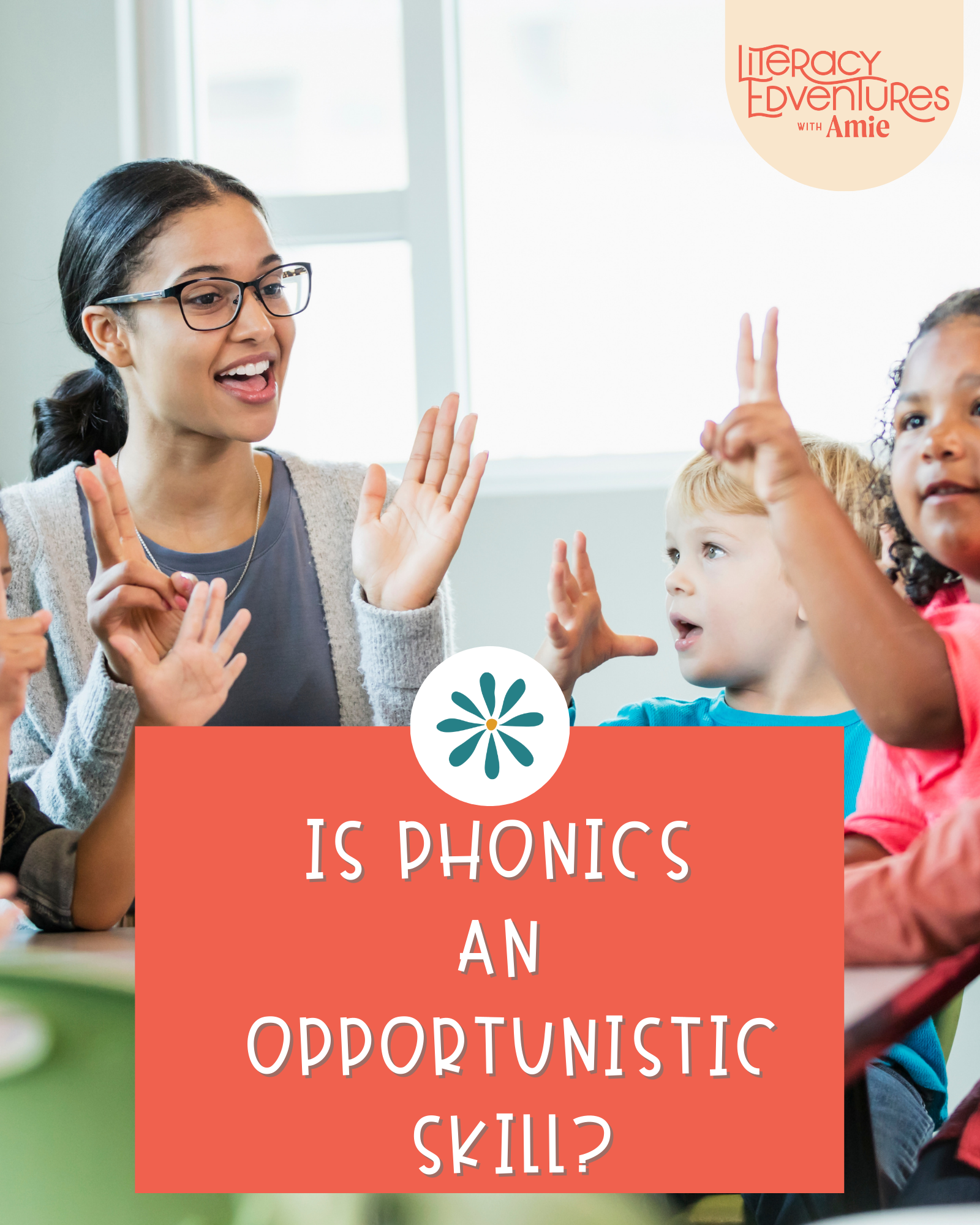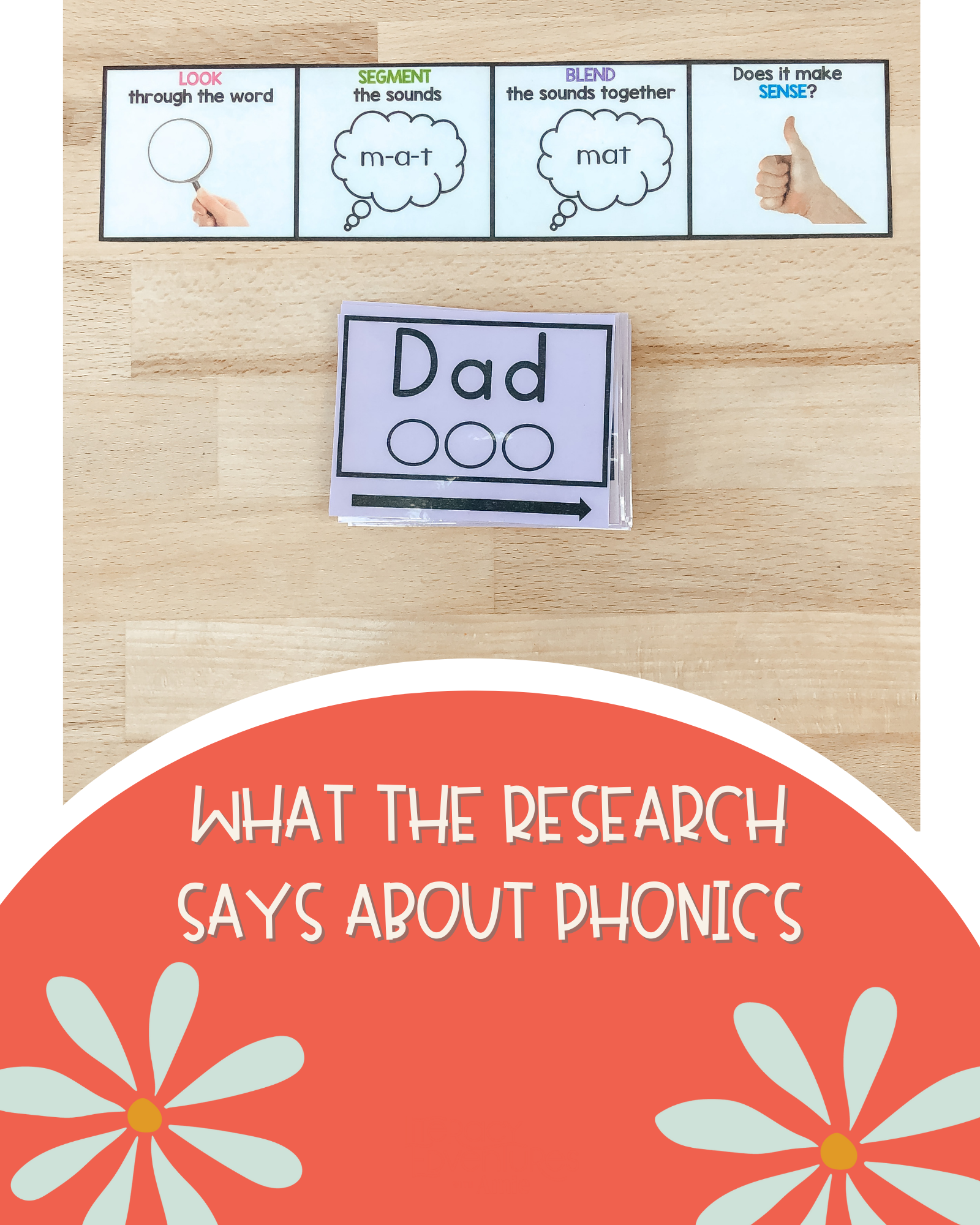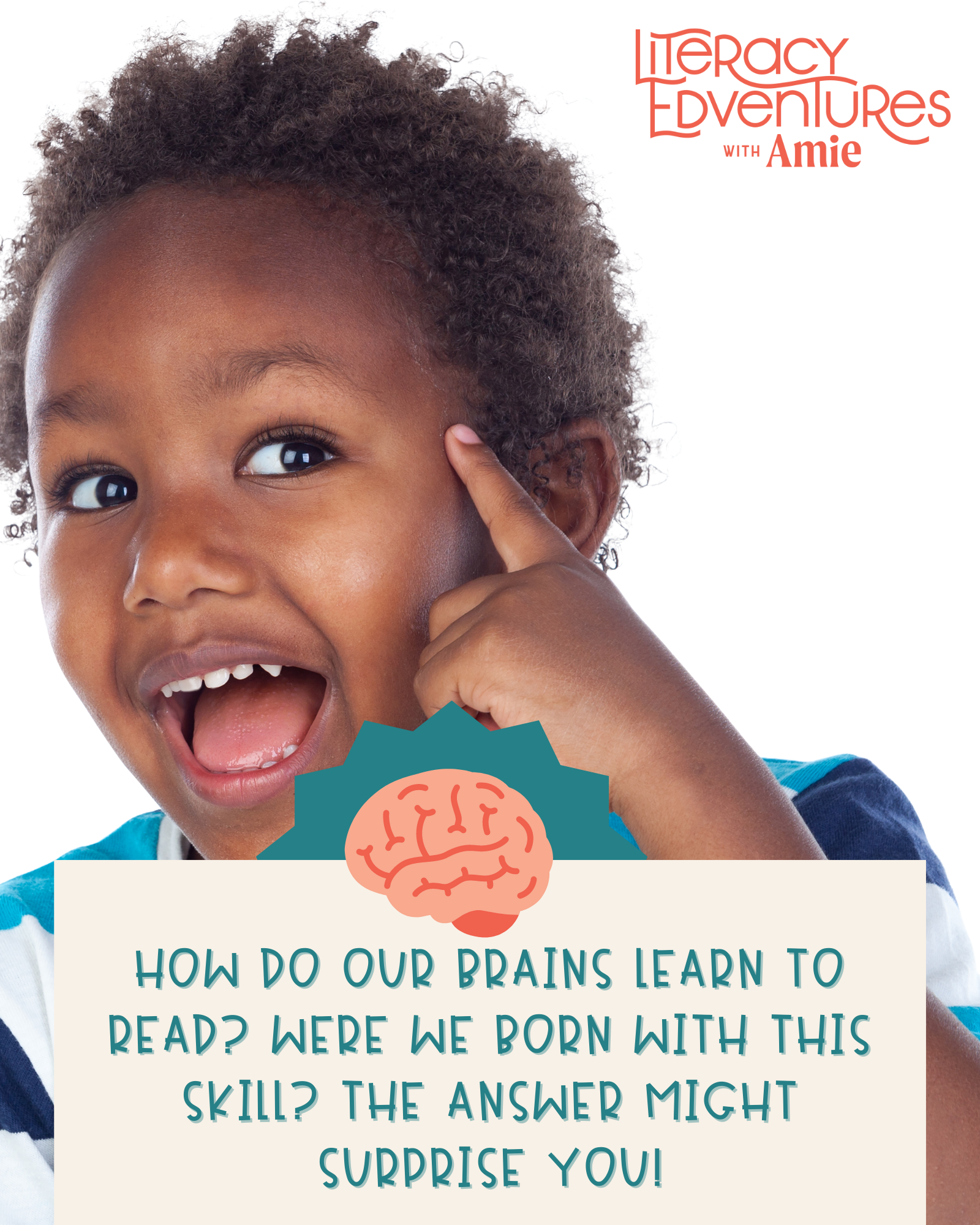What Does Brain Research Say About Phonics Instruction?
You’ve heard time and time again how important phonics instruction is. We’ve seen the data, you’ve poured over Instagram reels, and you may have even done some research yourself.
But what makes good phonics instruction, and can’t someone help make it easier to understand?
Yes! Today, I’m here to go over what makes effective, quality phonics instruction (in a way that’s easy to understand), plus give you a little bit of background as to what goes on in our brains when we read.
The goal? By the end of this post, you’ll be equipped with the confidence you need to being your explicit phonics instruction today!
Way back when, it was believed that phonics instruction should be taught in an opportunistic manner. What do I mean by this? I mean that when teaching phonics, teachers used to just spend some time in a leveled text, see what phonics skills were presented, and touch on a few of them. Then, they’d move on. It was believed that if you exposed children to books, showed them your love and passion for reading, and surrounded them with books and vocabulary, they would be - voila! - readers.
Well, this is very much not the way to teach phonics, and there’s tons of evidence to support the fact that phonics instruction should be three things: explicit, systematic, and sequential.
Before we dive into these three important aspects of teaching phonics, we need to chat about what our brains do as we read. Want to know something crazy? Our brains are not hard-wired to read. They’re hard-wired to speak - our entire human history is based upon the need to communicate in the spoken form. We think that if we expose our kids to good books, they’ll just learn to read. But guys, it’s so much more nuanced and complex than that. Let’s take a look at what happens in our brains as we read - because there’s a lot that goes on.
Let’s assume just for a second that our brains are hard-wired to read. When we read, this is what happens: First, we see the letters with our eyes and our brain takes it in to do some orthographic mapping. This is when they recognize the letters. After that, it moves to the phonological processor and recognizes the sounds of the letters. Then, it connects the two and attaches it to the word’s meaning. Woah! That’s a lot of work. So if our brains weren’t born to do this naturally, how does this happen? Well, that’s where YOU come into play! You, as their teacher, get the amazing honor of helping students connect these pieces.
When we understand this reading process that occurs in the brain, we’re able to support our students and teach them to read. Think of this idea as a reading factory, and we as teachers are helping them build theirs. That factory forms between the orthographic processor (the visual) and the phonological processor (the sound). Through explicit, systematic, and sequential phonics instruction, we create a roadmap between the two that drives right through that factory. How cool is that!? That’s why it’s so important to teach phonics the right way. And what is the right way? The right way is being explicit, systematic, and sequential.
Explicit. When we teach explicitly, there’s zero room for guessing. We teach our students exactly what we want them to learn - there’s no frills and no wondering. It might sound something like this: “Okay class, today we’re going to learn the digraph sh. It has an /s/ sound and an /h/ sound, but when we put them together, it says /shhh/.” You are explicitly telling them what sound this digraph makes. You may even put one finger up and say “s” and another finger up and say “h.” Then, you’ll put your two fingers together and say, “/sh/.” You are being direct and, if possible, brief.
Systematic When we chat about this, your scope and sequence should come to mind. Exactly how are we going to progress through these phonics skills, and where do we start? We can’t just teach it willy-nilly - we must have a plan and a path. We must choose a scope and sequence that’s organized and moves from simple phonics skills to more complex ones. Our scope and sequence should also ensure that the skills build upon one another in a way that makes sense.
Consistent. Okay, so I didn’t mention this previously, but this is my own little addition to what I feel phonics instruction should be. All phonics instruction should be consistent for students. When instruction is consistent, students thrive. They love knowing what’s coming and getting into a routine. I mean, don’t we all!? Learning can better take place when students know what to expect. Students can say, “Okay, today I know we’ll do our warm-up, there will be a lesson, and I’ll read my decodable book.” My best advice to you is that when you’re being consistent, choose five activities to do in a small group that is really strong, explicit activities. Ensure that these activities are connecting the sound to the symbol and include grapheme mapping, word chaining, and similar activities. And, as always, all activities should be supporting the reading research behind phonics.
So, why is it important to teach phonics keeping these three things in mind? Well, the National Reading Panel examined the impact of systematic phonics instruction, and what they found was remarkable. Phonics instruction that had a clear path and built upon previous skills outperformed the more opportunistic approaches mentioned earlier. So when we are teaching phonics the correct way (systematically), we can be confident that we are doing it in a way that will yield results. But other than the fact that we know that it works, exactly why does it need to be done systematically?
That’s because phonics is complicated. Since phonics is all about connecting the phoneme to the graphene, let’s think about this: there are 26 letters in the alphabet - 5 vowels and 21 consonants. Not too many, right? It should be easy to teach all of those! Well, of those 26 letters, there are 44 sounds. Those 5 vowels? They’ve got 20 vowel sounds. And those 21 consonants? Well, there are 24 consonant sounds. Woah! That’s a lot more than what it initially sounded like. Take, for example, the letter A. The letter A can be represented in the following ways: ei, a_e, short a, ai, ey, open a, ea, and ay. This is why our instruction needs to be explicit, systematic, sequential, and consistent.
That’s a lot for students to wrap their brains around. And, much like construction workers paving that road for them that leads to their reading factory, we are the ones who need to help them do the hard work and the heavy lifting (aka: deliver solid phonics instruction!) so that they can become life-long readers. Check out some resources that can help you do just this below!
Helpful Phonics Resources:
Phonics Reading Roadmap: phonics instruction with the science of reading in mind. Learn how to teach systematic and explicit phonics instruction.
Kindergarten Roadmap: focus on letter sounds and phonemic awareness, and be equipped with tools you’ll use in your small group lessons that will encourage phonics and decoding
Phonics Lessons & Activities MEGA Bundle: includes a scope and sequence, blank templates, phonemic awareness warm-ups, drill cards, sentence pyramids, and so, so much more.
Blog Posts:







